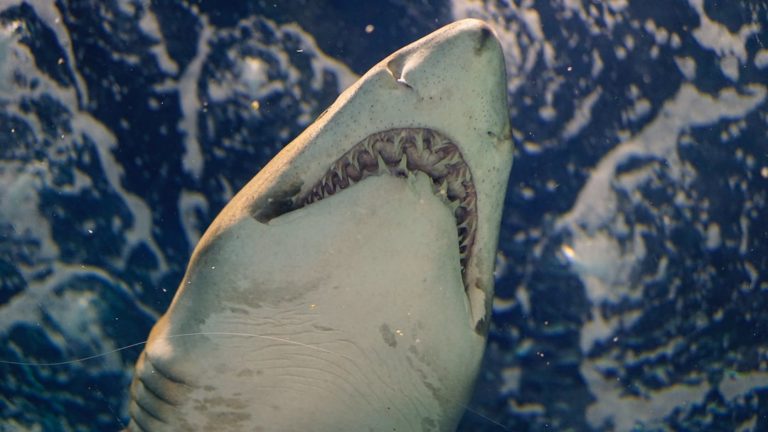Great White Shark vs Megalodon: 3 Things You Didn’t Know

Want to hear something hair raising?
If you know anything about megalodons (or have watched The Meg), you’ll be alarmed to know that there are many theories that claim megs still roam the ocean depths.
Fortunately, scientific simulations tell us that there is only a 1% chance of this being true.
However, there is another shark of prehistoric origins that is still with us. And that is the great white shark.
Thanks to our innate fascination with these prehistoric monsters of the depths, both great whites and megalodons frequently inspire spine-tingled movies. But these two food chain dominators actually have a lot of differences.
Read on to find out 3 interesting facts you probably didn’t know about great whites vs megalodons.
1. The Great White Shark Is Not the Closest Relative of the Megaladon
For many years scientists believed that the great white shark was the closest surviving relative of the megalodons.
Although both these prehistoric sharks lived at the top of the food chain, it’s now believed that the closest relative to the megalodon is the mako shark.
Mako sharks aren’t as notorious as the great white shark, probably because they are responsible for fewer attacks on humans. However, they are just as fearsome a predator, boasting speed, agility, power, and aggressiveness.
2. Megaladon’s May Have Weighed 50X More Than the Average Great White Shark
According to current estimates, the great white shark is roughly one-third of the supposed size of the prehistoric megalodons.
However, this fact is slightly misleading. Great whites are supposedly one-third the length of megalodons. Weight-wise however, shark tooth fossils indicate that megalodons were roughly 50-100x heavier than the average great white shark.
The average weight of a great white shark is 0.5-1.2 tonnes. The estimated weight of a fully grown meg is 50 tonnes. Therefore the math tells us that megs were vastly heavier than the great white shark of today.
3. The White Shark May Have Caused the Extinction of the Megalodons
One of the lesser-known interesting meg facts is that the great white shark might have actually caused the extinction of the megalodons.
There are many theories about the extinction of the megalodons. Some scientists hypothesize that it was due to changing sea temperatures, dropping sea levels, or a supernova.
However, recent research has revealed that the extinction of the megs might have happened roughly 1 million years early than first supposed. Interestingly, this lines it up with another revolutionary moment in history. The rise of the great white shark.
Scientists don’t know of any other notable event during this time in history that might have triggered the extinction of the megalodons. This further points to the possibility that it might have been the puny (in comparison) great shark white shark that caused the megalodons’ extinction.
Although a lot smaller than megalodons, fully grown great whites could have competed with juvenile megalodons, depriving them of food sources.
Do You Want to Be the Owner of a Real Megalodon Tooth?
Although the great white shark and the megalodons are both prehistoric species, there is one big difference between them—apart from the jaw-dropping difference in size. While the great white shark still exists today, the megalodon is pretty much certainly extinct.
However, there is one thing they have left behind. And that is their teeth. Although hard to come by, authentic megalodon teeth are just about the only fossil record that exists of these giants of the depths.
Would you like to own a megalodon tooth yourself? If so, you are in the perfect place.
If you are looking for a real megalodon tooth for sale, browse our online shop. All of our listings are authentic megalodon teeth that have been found on the seabed by our divers.



